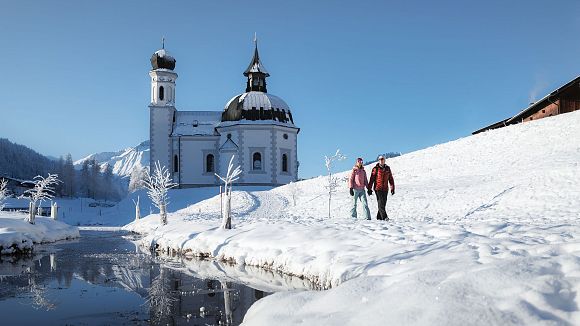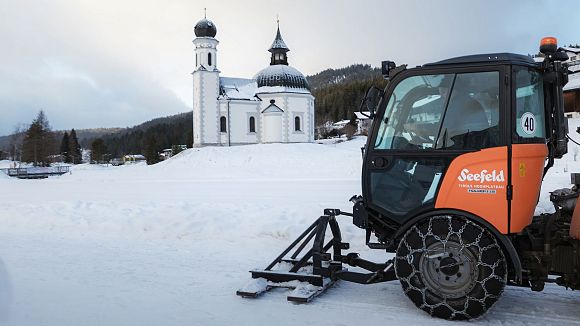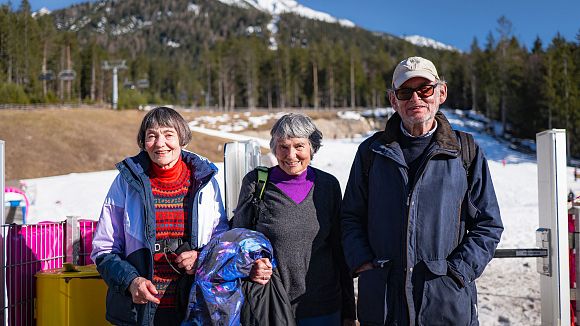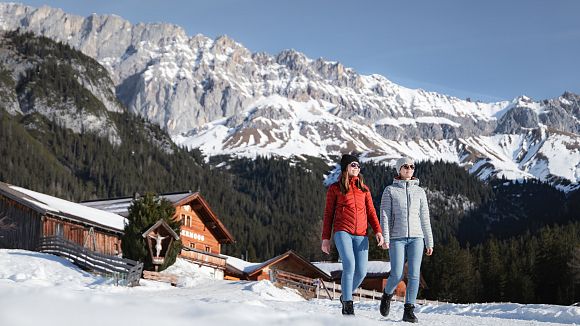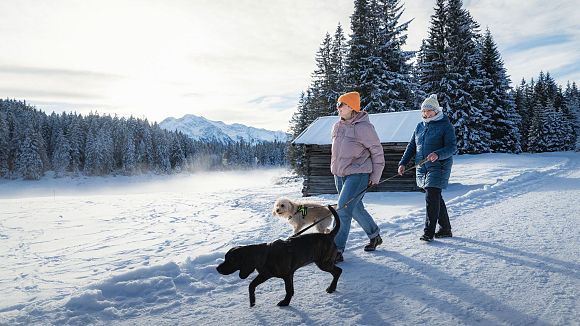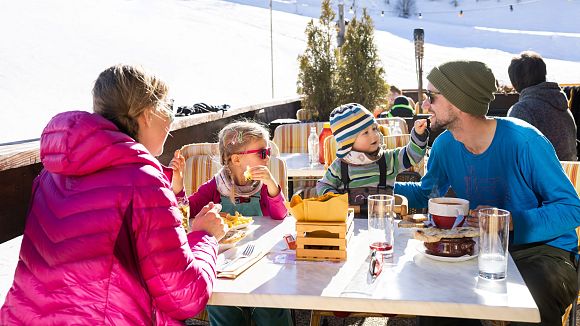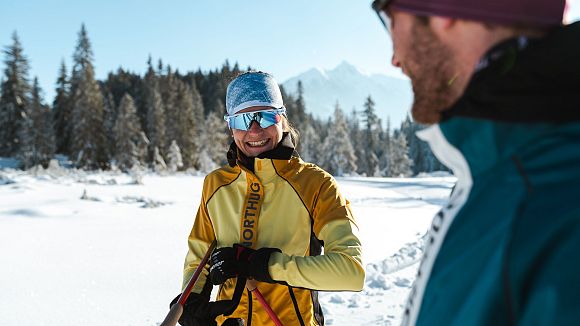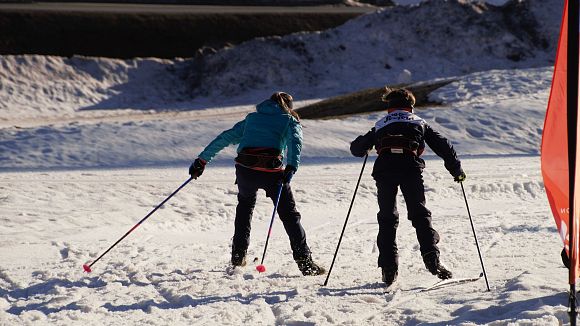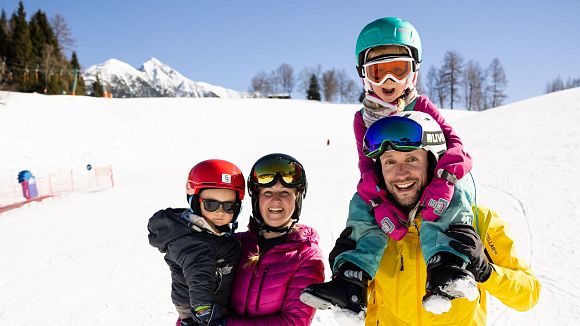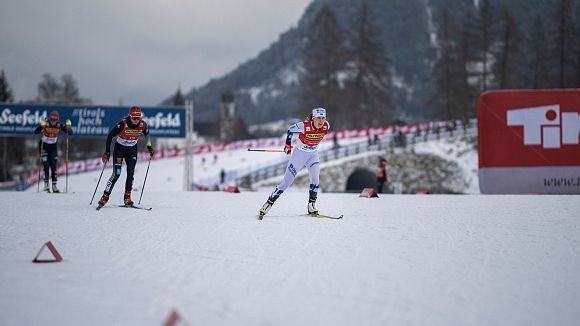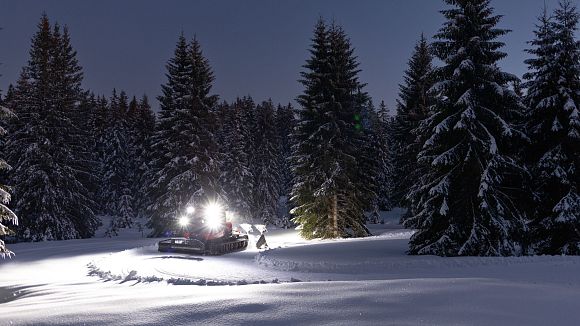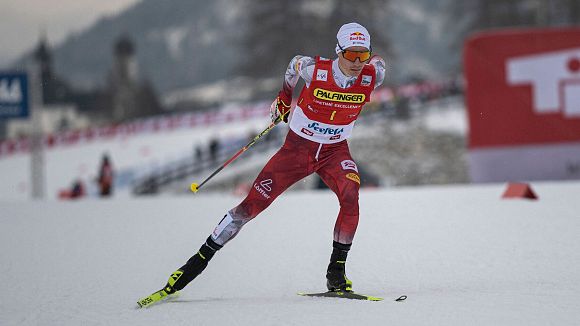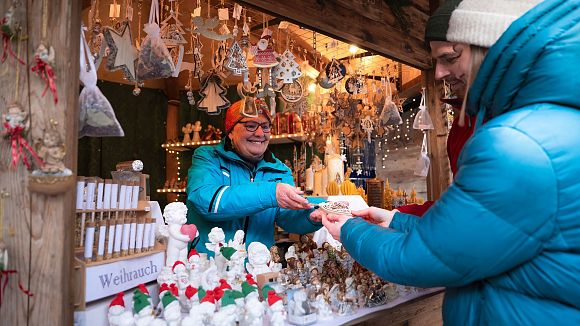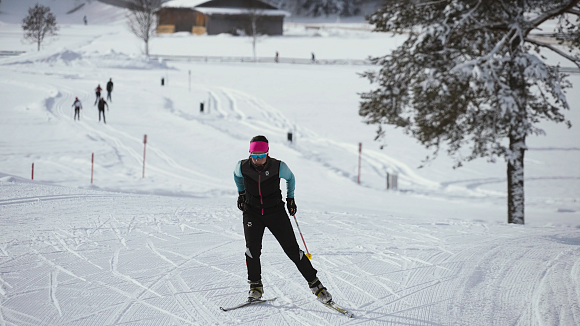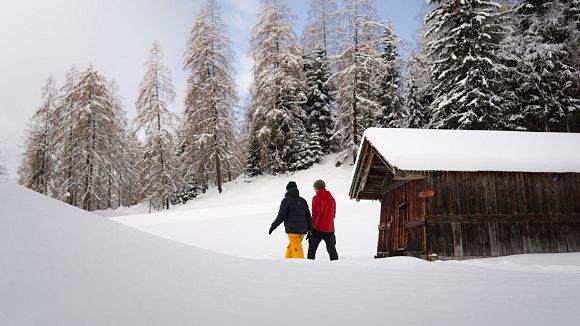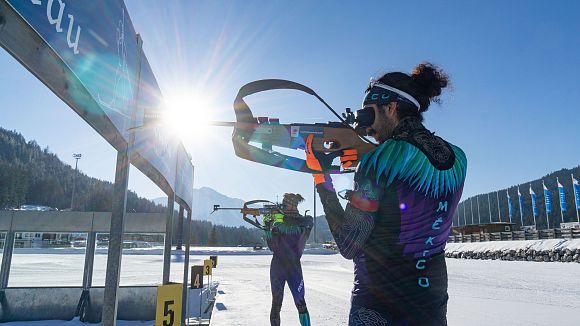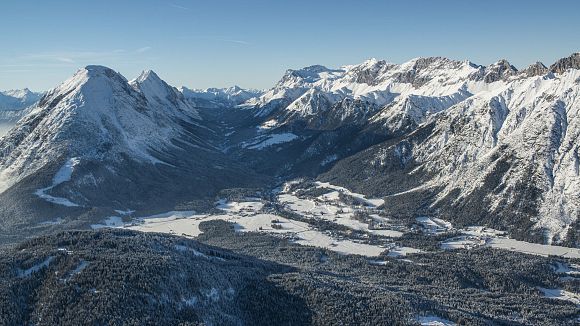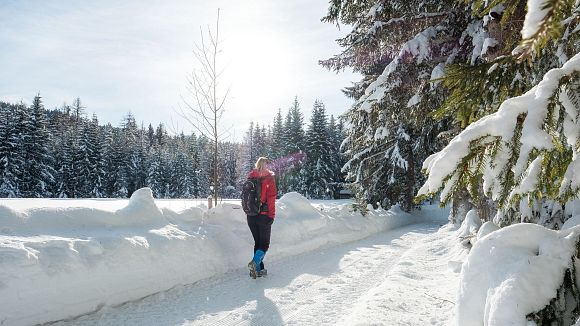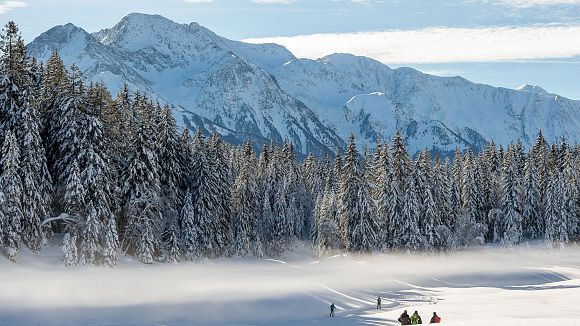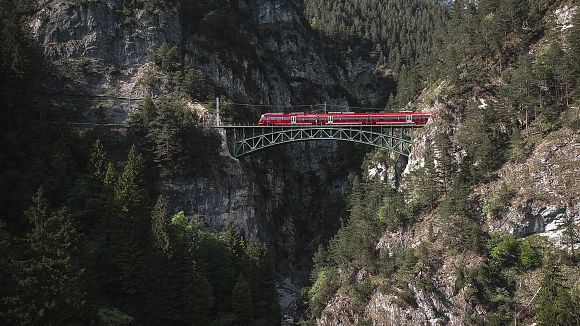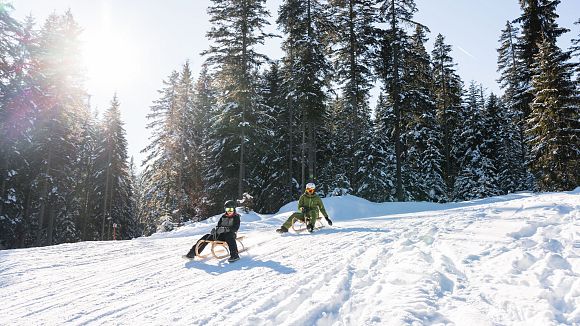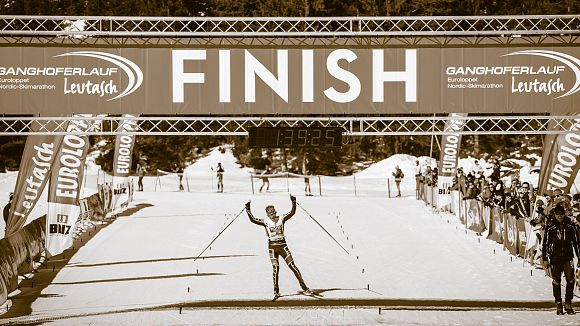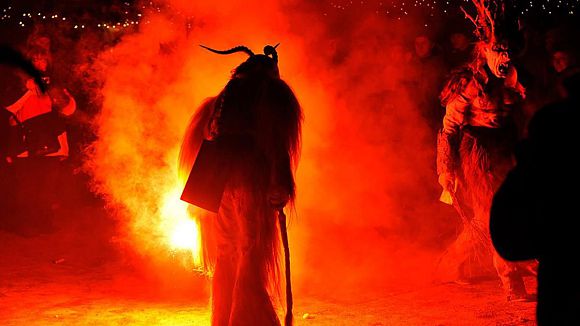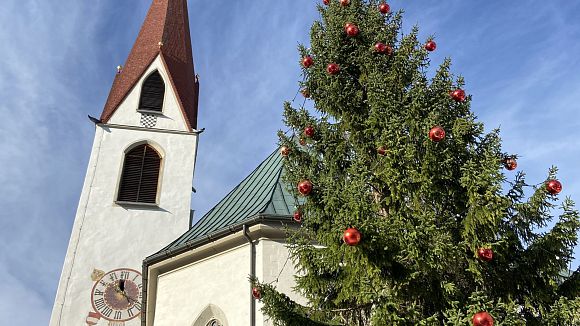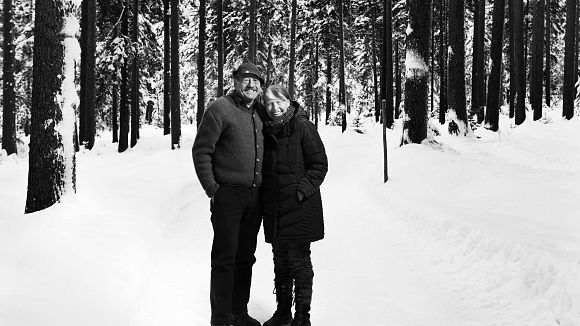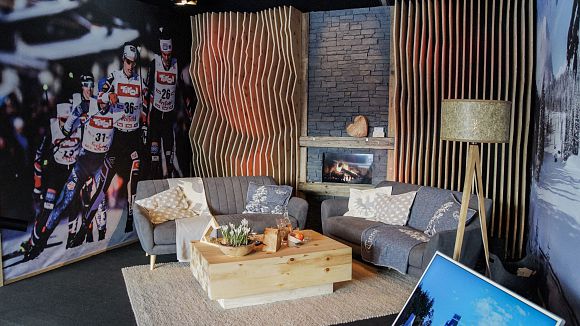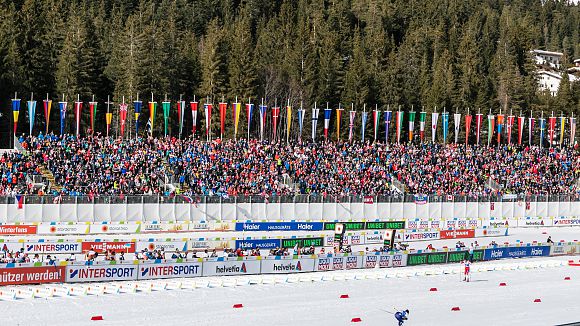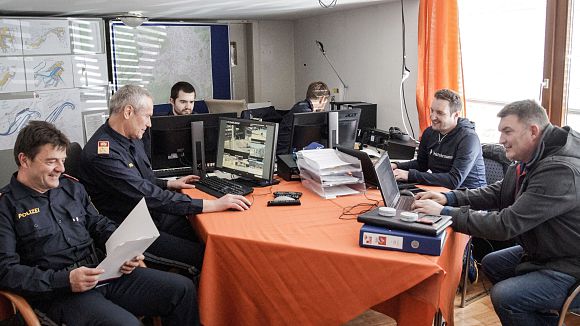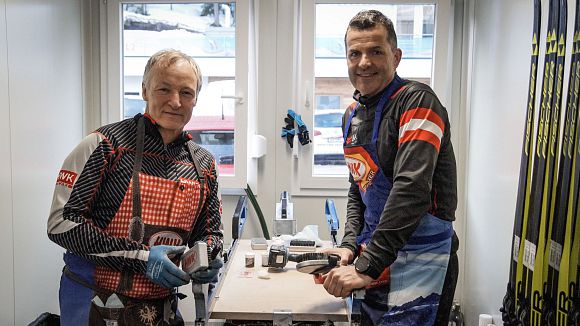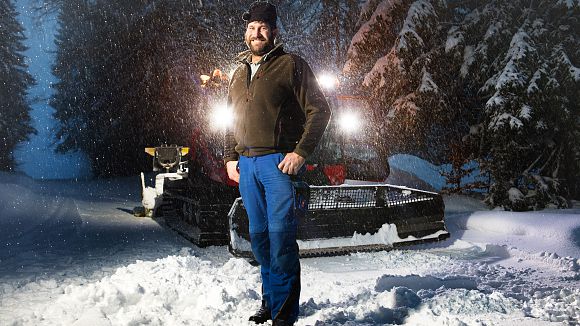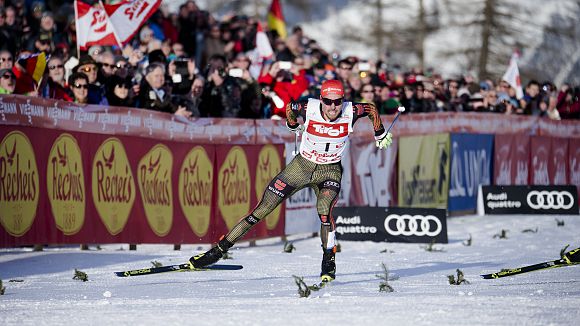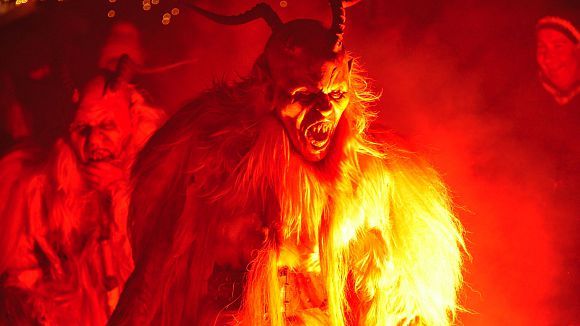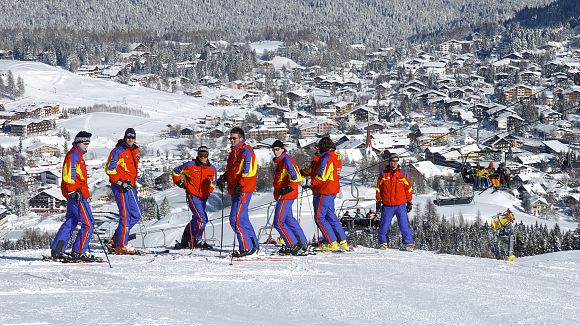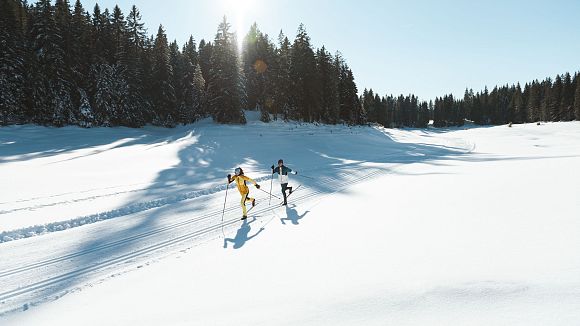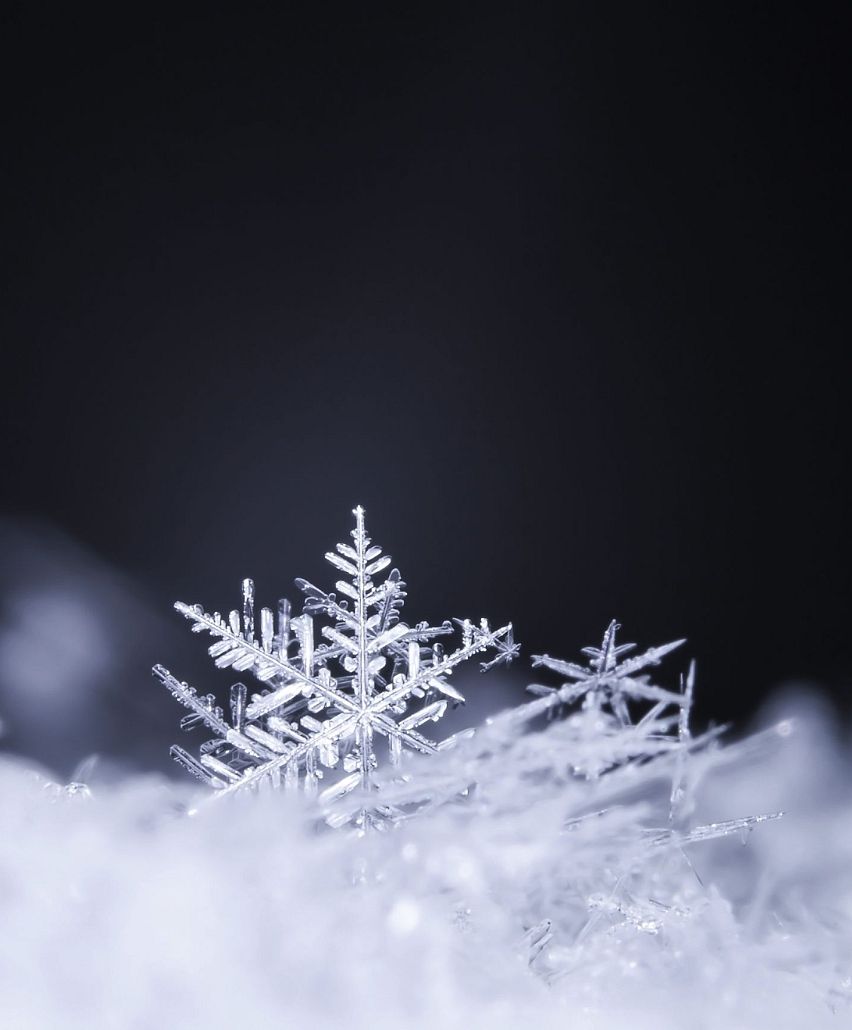
von Zeit.los Magazin
November 22, 2022
WINTER
Wonderland Winter: On the trail of rare beauty
When temperatures are cold, physics meets aesthetics: when frost pushes humidity around freezing point to its physical limits, rare winter phenomena can be observed particularly well. For example, why there are no two snowflakes alike in fresh powder, why fish can hear bells ringing underwater, or why it sometimes snows in pink in the Tyrol. And winter is a science of its own in the truest sense of the word.
Quietly trickles the snow...
In general, when it gets cold, the speed of sound decreases. If the temperature drops from 20 degrees plus to minus 10 degrees Celsius, for example, the speed of sound of 343 meters per second also drops by 20 meters. What we notice of this in the snow is how quiet it gets in winter. Because the sound waves travel between the crystals, so to speak, fresh snow absorbs sounds particularly well. However, the older, wetter and heavier the snow becomes, the fewer cavities there are for sound to travel through – and then the volume also returns. With the Sound of Seefeld, by the way, you can listen to winter everywhere on Tyrol's high plateau – even in summer.
....still and rigid rests the lake
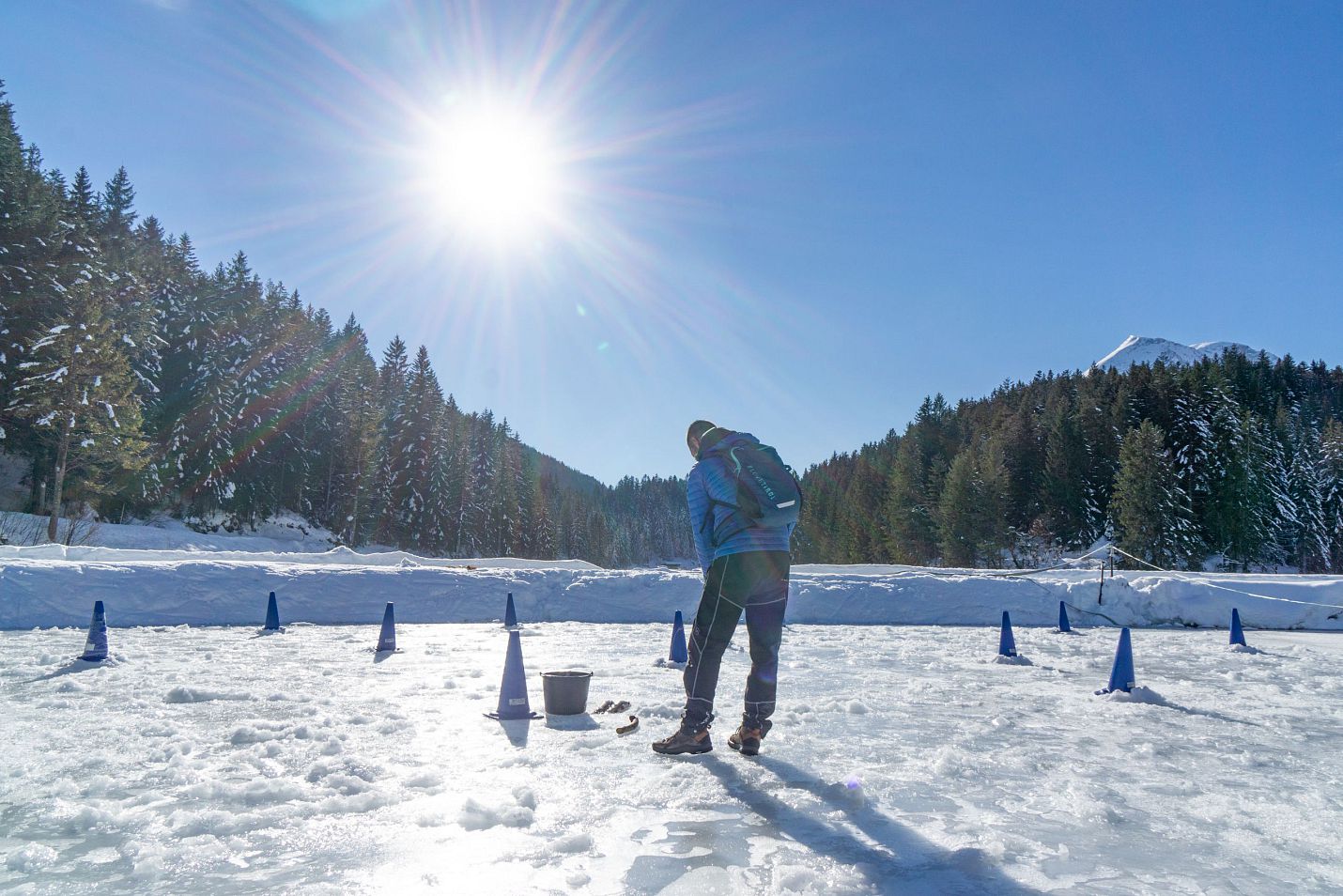
Cross-country skiing in the Seefeld region
Professor Lawrence Crum of the University of Washington even analyzed the quiet trickling of snowflakes on a lake with the help of hydrophones. About every tenth flake produces a sound of up to 100 kilohertz. Bright and clear, almost like a small bell. To fish, snowfall sounds like Christmas bells ringing – and when ice fishing on Lake Leutasch's Weidachsee, you can listen very carefully yourself.
The dog in the sky
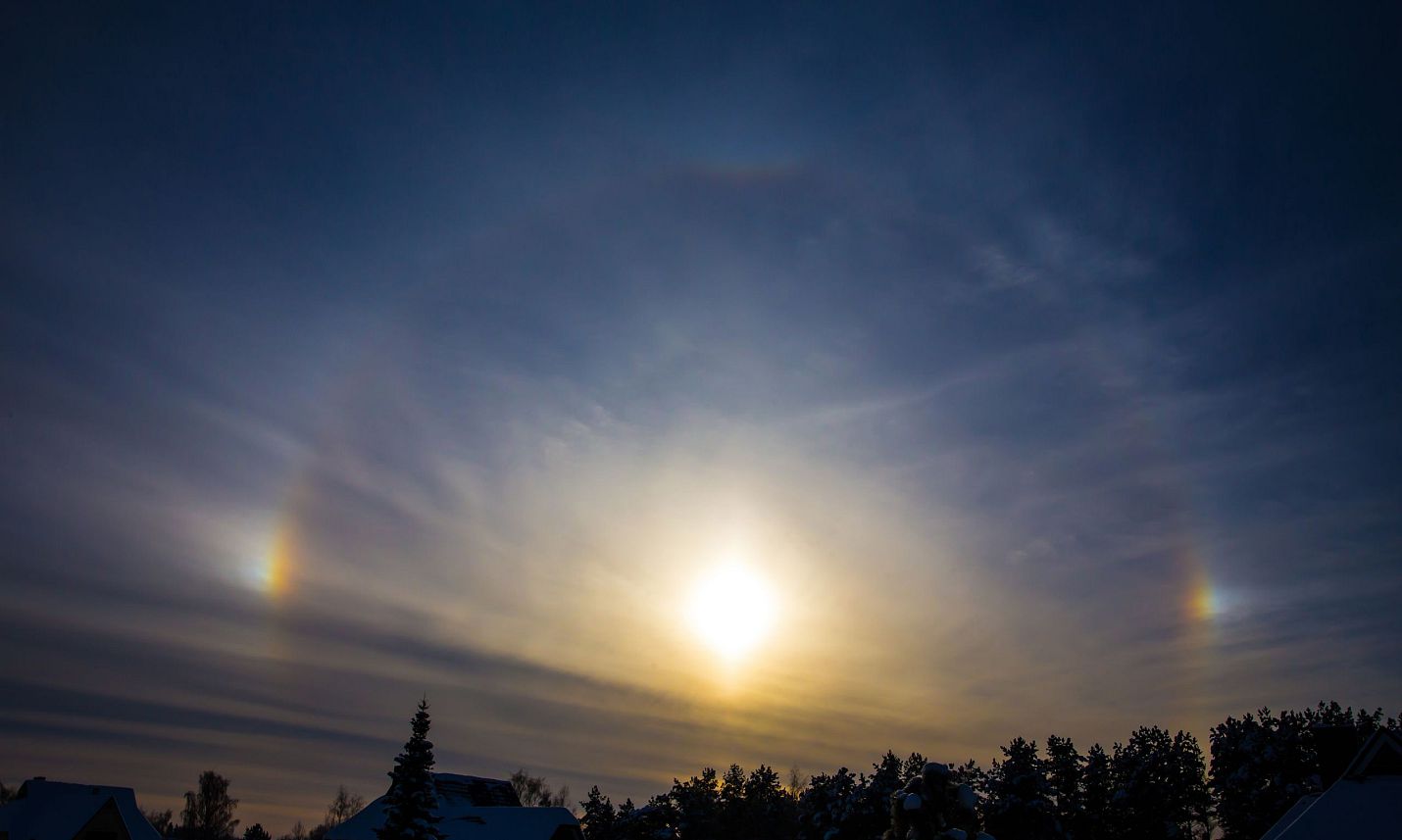
Sunset in the Seefeld region
If enough tiny ice crystals float in the icy high atmosphere, an optical refraction phenomenon with so-called parhelia occurs: Next to the sun – especially good on bitterly cold winter days – a halo of rays appears. On the sides to the left and right of the sun, at about a 45-degree angle, there are two other bright spots that look like mini-suns. This phenomenon is also called sundogs – dogs chasing the sun. A much sought-after photo motif, but one has to be in exactly the right place at exactly the right time and then at the ideal angle.
Pink snow & sky fire
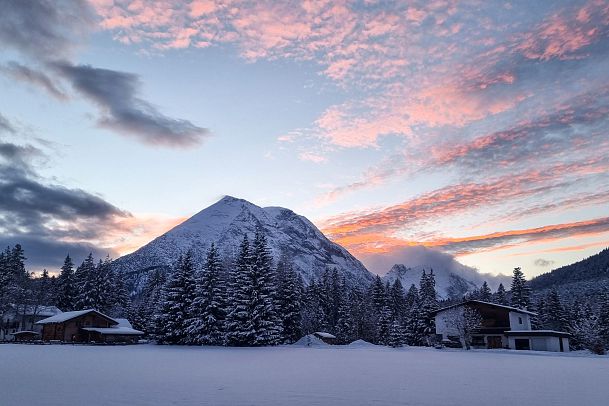
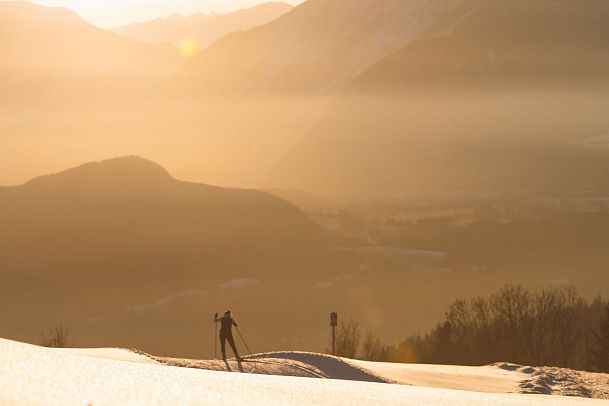
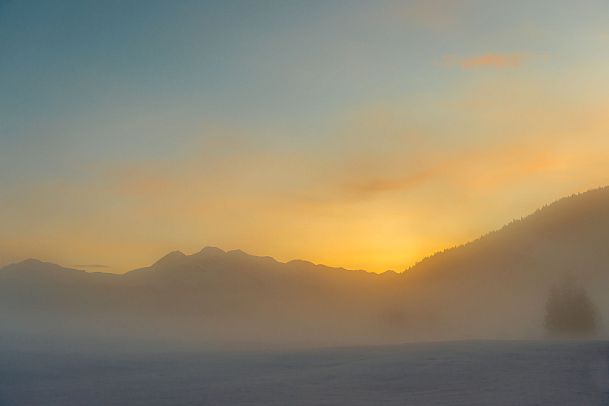
A white landscape, immersed in breathtaking evening red. To experience this, you need one thing above all: dust. The higher the dust content of the atmosphere, the greater the likelihood that you will experience a "burning sky". In Tyrol, it is mainly Sahara dust that is responsible for this phenomenon. Incidentally, this very dust is one of the main food sources for the bacteria on the glacier. And when the clouds finally capture the red dust in snow crystals, it sometimes snows pink in the Tyrolean Alps.
Shape and flake
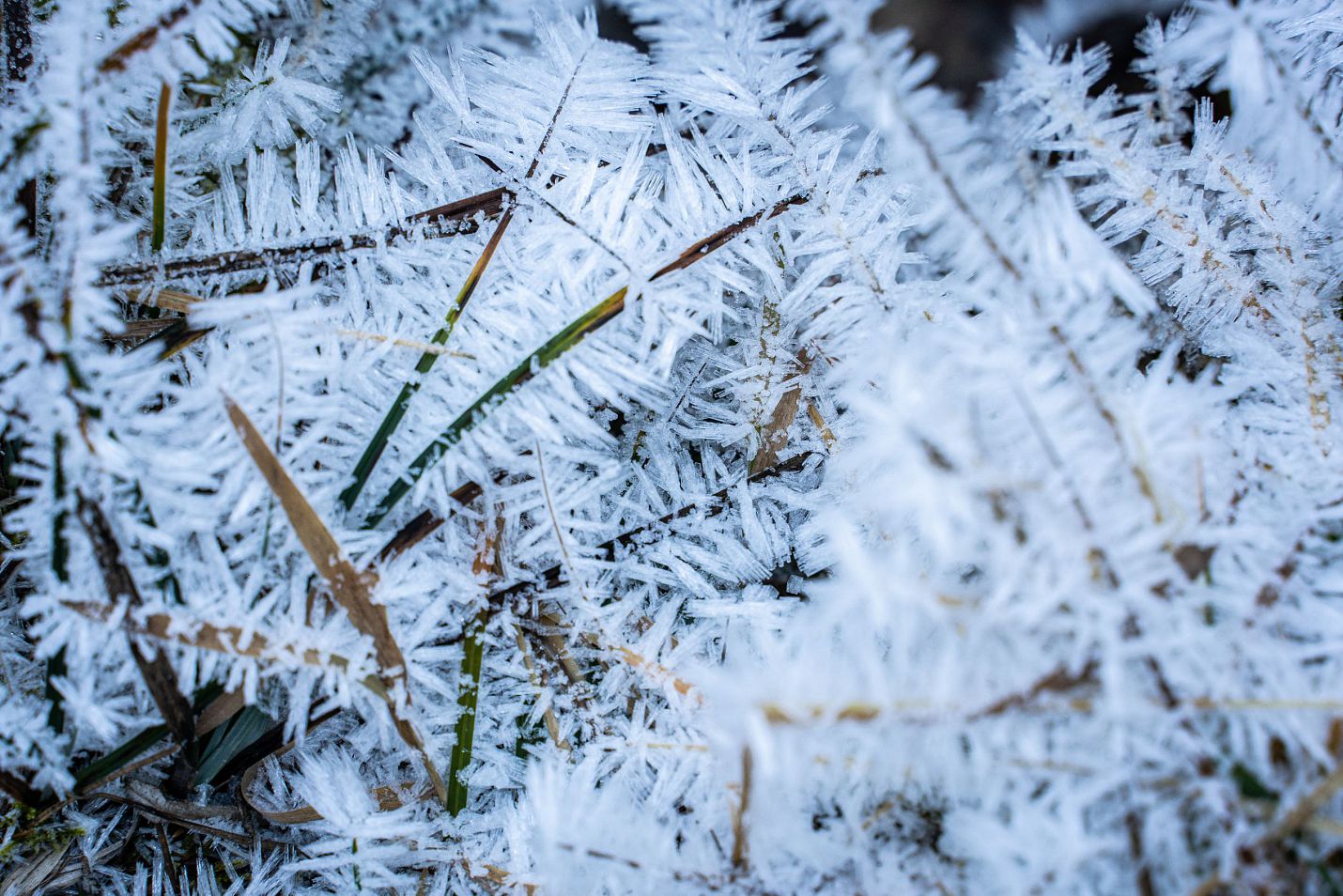
Ice and snow on the Leutascher Ache in the Gaistal in winter
The shape of snow crystals is due to their physical properties. Although the basic shape rigidly adheres to the Euclidean hexagon (hexagon), the standard allows itself playful diversity and astonishing individuality within the regulations. The fact that no two snowflakes are alike is actually statistically true: There are even more possible crystal forms on Earth than there are atoms in the entire universe.
Frosty and early riser
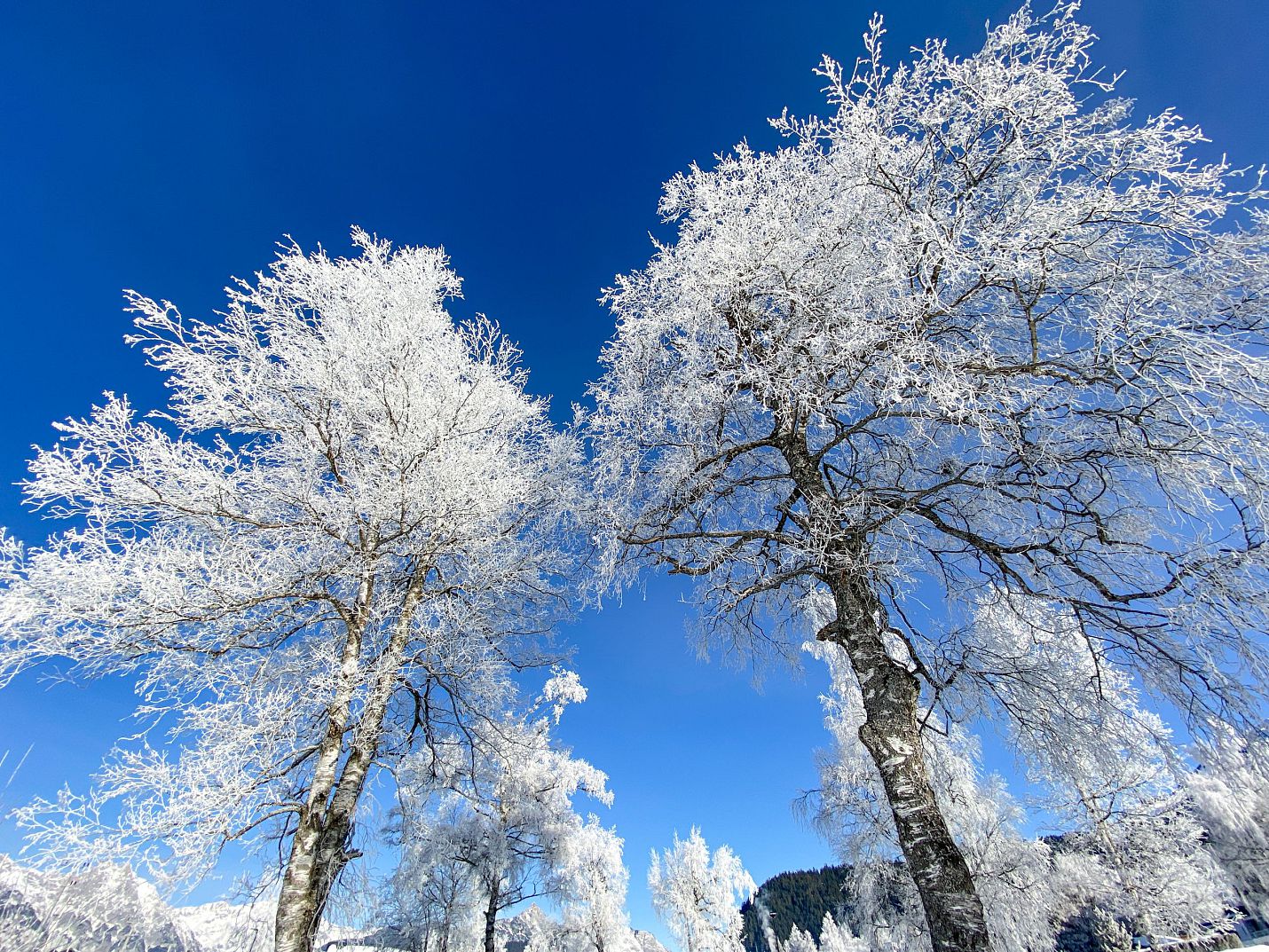
Snow at the golf course in Seefeld
On many an icy winter morning, you'll find the trees of the Seefeld region covered in thousands of sparkling ice crystals. A rare phenomenon that only occurs under perfect conditions on frosty foggy nights, when the moisture in the air freezes trunks and branches into bizarre structures. Frosting means icing in English and actually fits quite well here. With the first rays of sunshine, however, the spectacle literally vanishes into thin air – but early risers are sometimes rewarded with a particularly rare sparkle in the winter morning on Tirols Hochplateau plateau.
Mysterious snow roll
At least as rare and strange are the so-called snow rolls that form as if by magic on snow-covered slopes. The formations are remotely reminiscent of hay bales, but in the completely wrong season. Resourceful trackers may even see a half-finished snowman behind them, but the curls are actually far too airy and delicate for that. It is suspected that strong gusts of wind secretly lift an accumulated snow cover at hilltops, fold it over and carefully roll it up downhill. Perhaps even just so that we have something to marvel at while walking in the snow.
The Finnish Tykkylumi
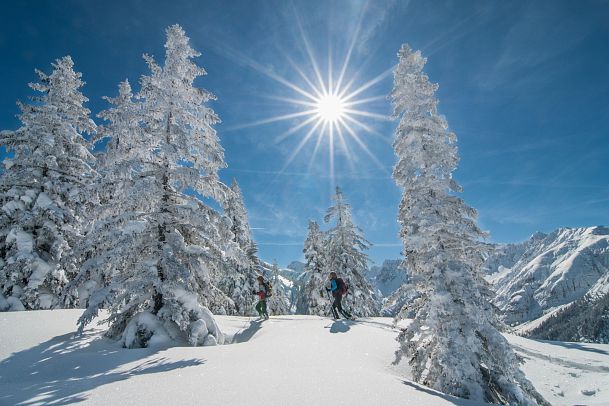
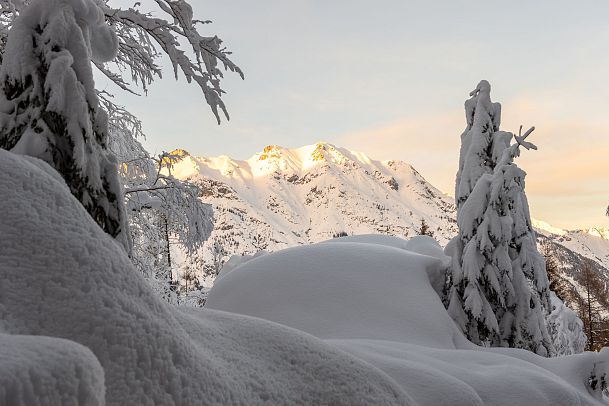
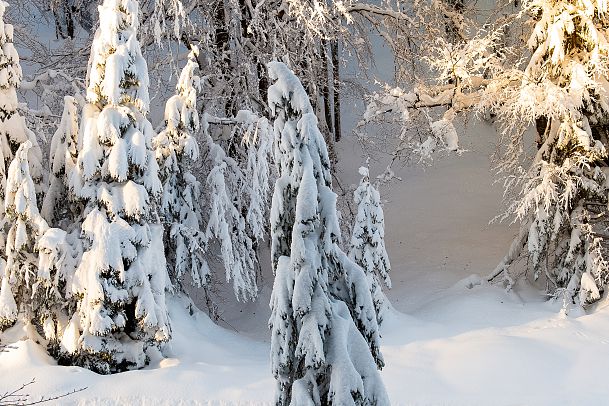
For rare snow phenomena, the far north is exactly the right place, but even on Tyrol's high plateau it becomes truly Nordic in winter: Then you can marvel at the so-called tykky snow, for which there is no translation at all in German, even in the alpine altitudes of the snowy Region Seefeld. In Finland, however, it is used to describe a very special snow consistency that clings voluminously and firmly to the trees and freezes into adventurous shapes as tykkylumi (snow candles or snow crowns).
Do you know how many little stars there are?
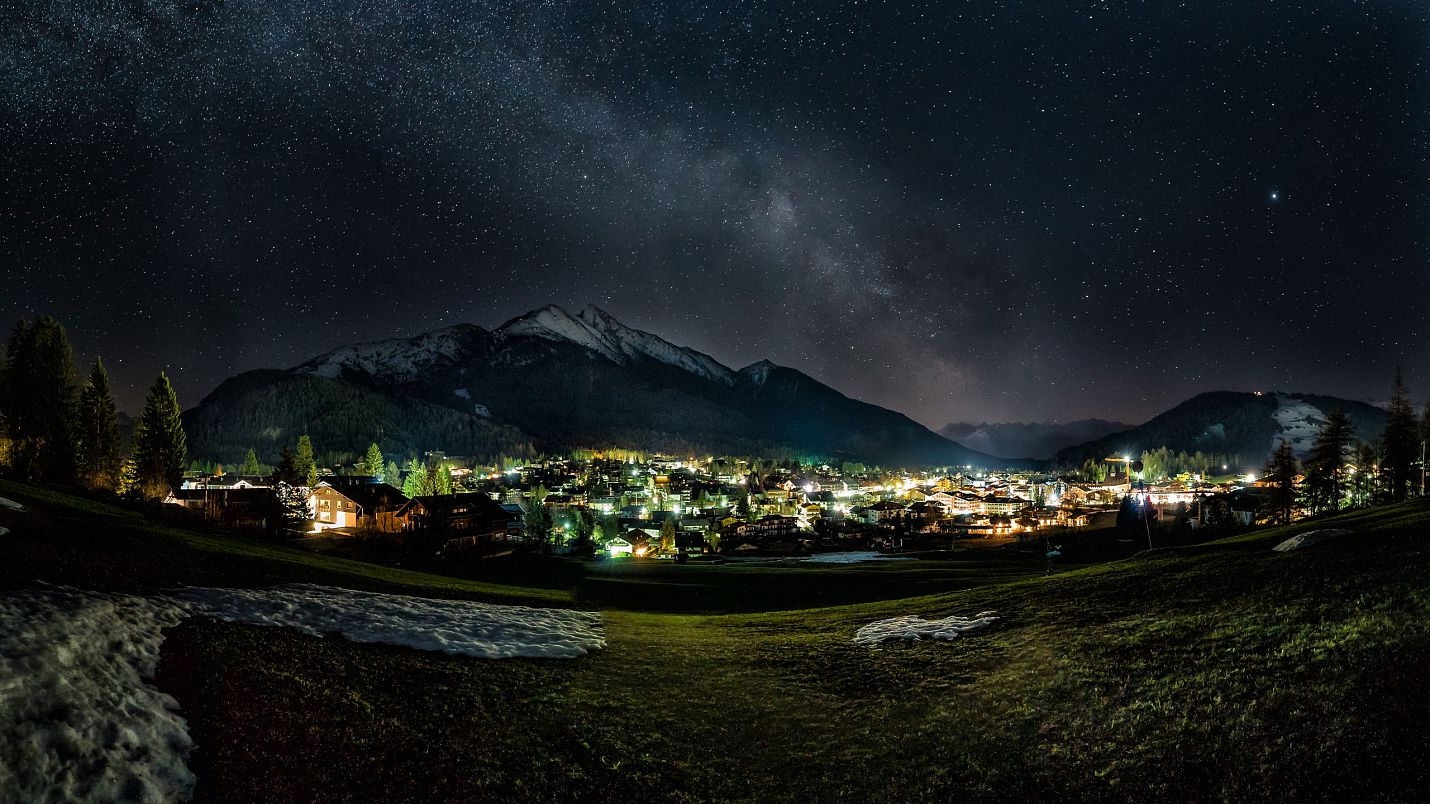
Seefeld under the stars
Basically, the further away from the lights of civilization, the more impressive and beautiful the starry sky. Where cold air can bind less moisture and dust for reasons of thermodynamics, less light smog is trapped, as a result of which constellations can be seen much better in winter. That's why winter is the perfect season for studying the sky or simply enjoying a nighttime walk in the snow under countless stars. In the Region Seefeld, by the way, this is possible either as a leisurely snow walk or even as a guided night snowshoe hike.
Share
